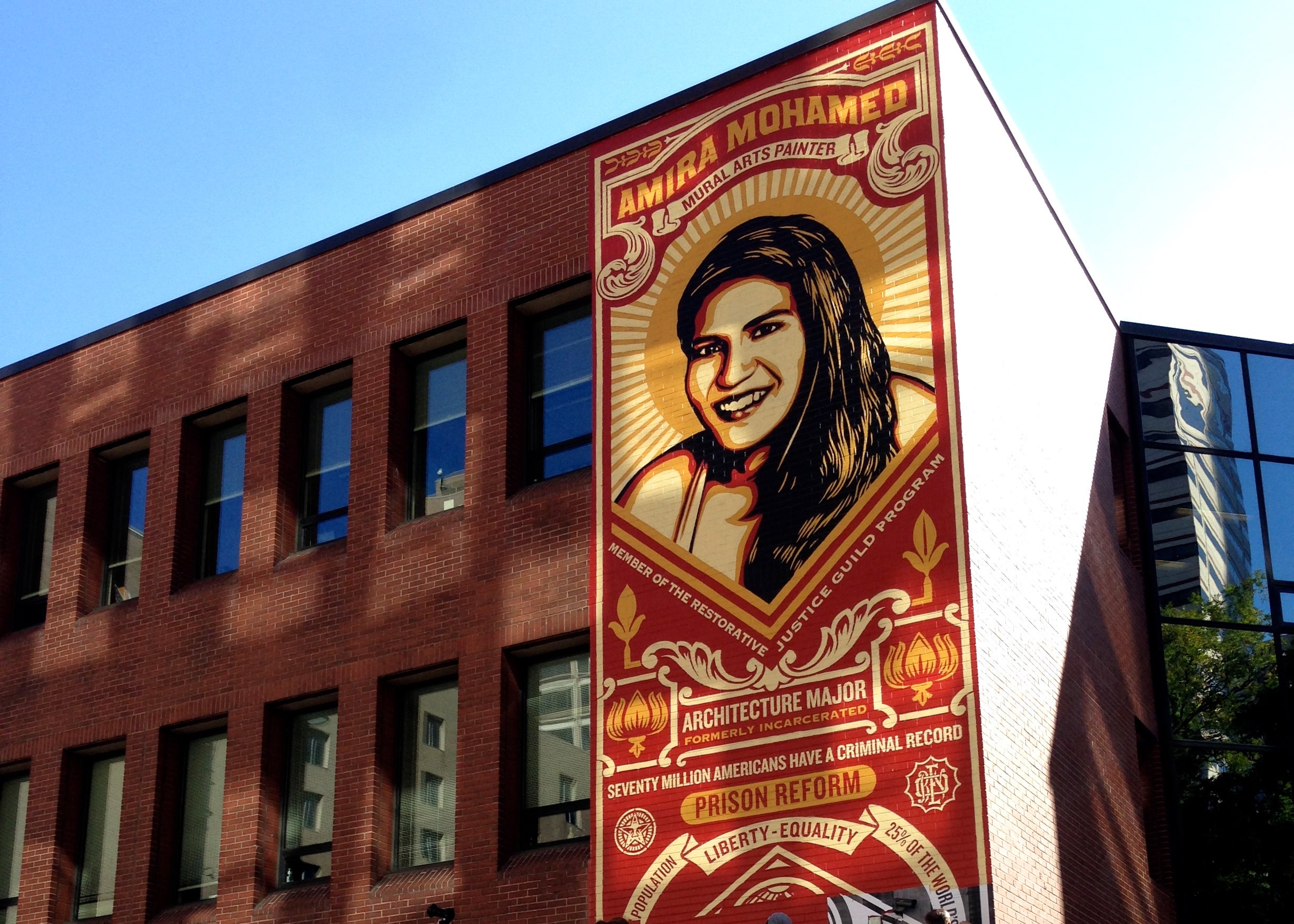October 16: Philly Fed study on displacement | Saffron slams light masts | Protected intersections

Inga Saffron hates the new North Broad Street light masts, writing that they “could easily be mistaken for highway lighting.” Aesthetic preferences aside, Linda Richardson of the Uptown Entertainment and Development Corp flags a potential safety issue with the masts, telling Saffron that “traffic is becoming faster, especially during rush hour.”
Bobby Allyn reads the new Federal Reserve study on gentrification and displacement in Philadelphia, which finds people priced out of certain neighborhoods “were at a greater risk of moving to neighborhoods that were more economically distressed with lower qualities of life,” but for those able to stay put through the changes, “gentrification does in fact improve quality of life for those lower on the economic ladder.”
Street artist Shepard Fairey talks to Mark Dent about the Philly street art scene, and his new pieces for Mural Arts drawing attention to the issue of mass incarceration and how participation in prision arts programs decreases rates of recitivism. WHYY’s Peter Crimmins also caught up with Fairey.
A new report from the C40 Cities Climate Leadership Group and Stockholm Environment Institute says cities’ infrastructure choices over the next several years will have a meaningful impact on climate change mitigation efforts. Jen Kinney summarizes the findings at Next City: “[C]ities have a crucial choice: build green infrastructure instead of traditional, and avoid locking in 45 Gt C02 by 2030, eight times the US’s current annual emissions.”
Eleanor Klibanoff says that despite Hazelton, PA’s best efforts to uproot their growing Latino community, that population now comprises 40% of residents, and downtown Hazelton storefronts are alive with new immigrant businesses.
Pittsburgh officials cut the ribbon on the $150 million TIGER-funded East Liberty Transit Center–“a brand-new reconstructed transit station with a direct link to the Martin Luther King Jr. Busway, an apartment complex that will hold 360 market-rate units, a 554-space parking structure, a 120-space bike garage, and 43,000 square feet of retail space”
The Manhattan Institute released a free e-book titled “The Next Urban Renaissance” with essays from urban scholars like Ingrid Gould Ellen, Ed Glaeser, and Aaron Renn on a variety of topics including land taxes, to bus rapid transit, to entrepreneurship districts.
While Philly’s still figuring out where to put some protected bike lanes, Salt Lake City just became the second US city to build a protected intersection. Austin, TX built the nation’s first this summer, but it’s in an in-progress residential development, so it isn’t in use yet.
WHYY is your source for fact-based, in-depth journalism and information. As a nonprofit organization, we rely on financial support from readers like you. Please give today.






